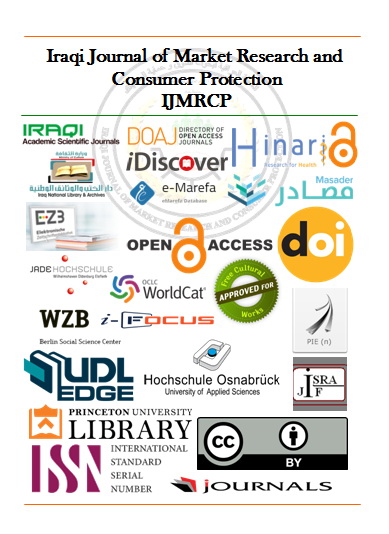ANTIBIOTICS SUSCEPTIBILITY PATTERN OF COMMON PATHOGENIC BACTERIAL STRAINS ISOLATED FROM PATIENTS WITH LOWER RESPIRATORY TRACT INFECTION (LRTI)
ANTIBIOTICS SUSCEPTIBILITY PATTERN OF COMMON PATHOGENIC BACTERIAL STRAINS ISOLATED FROM PATIENTS WITH LOWER RESPIRATORY TRACT INFECTION (LRTI)
DOI:
https://doi.org/10.28936/10.28936/(1)jmracpc11.2.2019Keywords:
Lower Respiratory Tract Infection, Antibiotics Sensitivity, Streptococcus pneumoniae and Moraxella catarrhalisAbstract
Lower respiratory tract infections LRTIs are quickly becoming the most prevalent infectious disorders affecting people. This investigation focused on characterizing the current shift in the bacterial strains causing the infections of respiratory tract among patients and their antimicrobial sensitivity pattern since antibiotic resistance has developed in all major pathogens.
In the microbiology lab of the Department of Biology Sciences / University of Baghdad, a cross- sectional research using non-probability sequential sampling method was carried out. Respiratory sputum samples taken from individuals with lower respiratory tract infections and collected 149 bacterial isolates. M. catarrhalis, S. pneumonia and H. influenzae were the bacterial pathogens diagnosed by VITEK 2 system and then gathered for further investigation. Frequencies along with percentages were calculated for categorical parameters including microorganism, age and gender. Continuous data like age was presented as mean + standard deviation SD. We used chi-square test for data analysis the value of Chi Square was deemed significant when the p value was P<0.05 . The pathogen that was identified most often was M. catarrhalis 60.4 percent, or 90 patients, followed by H. influenza 28.1 %, or 42 patients and S. pneumonia 11.4 %, or 17 patients. Levofloxacin had a greater sensitivity to S. pneumoniae n=17, 11.4%. Meropenem 42 28.2% was more effective against H. influenza. The M. catarrhalis pattern showed a 57% sensitivity to Co-amoxiclav, a 49% sensitivity to Ceftriaxone, and a 34.9% sensitivity to Erythromycin susceptibility.
- catarrhalis, H. influenzae and S. pneumoniae were the most frequently isolated bacteria from LRTIs. We found that the M. catarrhalis strain was highly resistant to moxifloxacin 49.7% and co-trimaxazole 53.7%. Co-amoxiclav resistance in S. pneumoniae was 8.1%, while Moxifloxacin resistance in H. influenzae was 5.4%.
Published
Issue
Section
License
Copyright (c) 2024 Iraqi Journal of Market Research and Consumer Protection

This work is licensed under a Creative Commons Attribution 4.0 International License.





